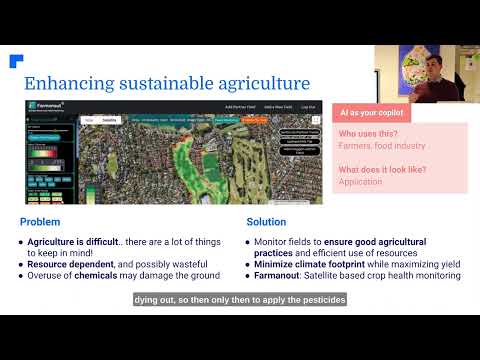Breaking: Massive Federal Workforce Reduction Hits Washington – What It Means for Government Agencies and Employees
“Over 9,500 federal employees lost their jobs in a massive workforce reduction across various US government departments.”
In a sweeping move that has sent shockwaves through Washington and beyond, we are witnessing an unprecedented federal workforce reduction that is reshaping the landscape of government employment in the United States. This massive downsizing initiative, aimed at addressing the federal budget deficit and streamlining bureaucracy, has resulted in over 9,500 federal employees losing their jobs across various departments, including Interior, Energy, and Agriculture.
As we delve into the details of this far-reaching federal agency downsizing, it’s crucial to understand the scale and implications of these changes. The US government job cuts are not only affecting thousands of workers but are also raising questions about the future of public service delivery and the overall efficiency of government operations.

The Scale of the Federal Workforce Reduction
The current federal workforce reduction is unprecedented in its scope and speed. Let’s break down the numbers to understand the full impact:
- Over 9,500 federal workers have been laid off
- Approximately 75,000 employees have accepted voluntary buyouts
- The total reduction represents about 3% of the 2.3 million-person civilian workforce
These cuts have affected a wide range of departments and agencies, including:
- Department of Interior
- Department of Energy
- Department of Veterans Affairs
- Department of Agriculture
- Department of Health and Human Services
- Consumer Financial Protection Bureau
- Internal Revenue Service
The impact of these cuts is far-reaching, affecting roles from managing public lands to supporting military veterans. Some agencies, such as the independent watchdog Consumer Financial Protection Bureau, have been essentially shuttered.
Motivations Behind the Federal Bureaucracy Reduction
The primary drivers behind this massive federal workforce reduction include:
- Addressing the federal budget deficit
- Reducing government spending
- Combating perceived waste and fraud in government operations
- Streamlining bureaucracy for increased efficiency
Supporters of these cuts argue that they are necessary to tackle the $36 trillion in federal debt and the $1.8 trillion deficit from last year. However, critics question the approach and its potential impact on essential services and oversight.
Impact on Government Agencies and Services
The federal workforce reduction is having a significant impact on various government agencies and the services they provide. Let’s examine some of the most affected departments:
Department of Energy
Approximately 1,200 to 2,000 workers at the Department of Energy were laid off, including 325 from the National Nuclear Security Administration, which oversees the nuclear stockpile. This reduction raises concerns about the maintenance and security of the nation’s nuclear infrastructure.
Department of Interior
The Interior Department, responsible for managing 500 million acres of public lands and overseeing oil and gas leasing programs, has seen 2,300 employees axed. This reduction could potentially impact the management of national parks and natural resources.
Department of Agriculture
While the exact number is unknown, significant layoffs have occurred at the Department of Agriculture. This could affect various programs related to food safety, rural development, and agricultural research.
Centres for Disease Control and Prevention
The CDC is facing cuts of nearly 1,300 workers, or one-third of its staff. This reduction could potentially impact public health initiatives and disease surveillance capabilities.
Internal Revenue Service
The IRS is preparing to fire thousands of workers, which could strain resources as the April 15 tax filing deadline approaches. This reduction may lead to delays in processing tax returns and providing taxpayer assistance.
“Approximately 75,000 federal workers accepted voluntary buyouts as part of the sweeping effort to reduce federal bureaucracy.”

Government Employee Buyouts and Voluntary Departures
In addition to the layoffs, the federal workforce reduction has included a significant number of voluntary buyouts. Approximately 75,000 workers have taken advantage of these offers, choosing to leave their positions in exchange for financial incentives.
These buyouts serve several purposes:
- Reducing the overall size of the federal workforce without forced layoffs
- Providing an option for employees nearing retirement or considering career changes
- Potentially saving money in the long term by reducing payroll and benefit costs
However, the large-scale departure of experienced employees raises concerns about the loss of institutional knowledge and the potential impact on government operations.
Controversy and Criticism
The federal workforce reduction has not been without controversy. Critics have raised several concerns:
- Potential impact on essential services and oversight
- Questions about the long-term cost savings versus short-term disruptions
- Concerns about the loss of experienced personnel and institutional knowledge
- Debates over the appropriate size and role of government in modern America
Congressional Democrats have argued that these cuts encroach on the legislature’s constitutional authority over federal spending. Meanwhile, Republicans in Congress have largely supported the moves as necessary steps to reduce government bloat and inefficiency.
Long-Term Implications for Government Efficiency
As the federal workforce reduction continues, questions arise about its long-term implications for government efficiency and public service delivery. Some potential outcomes include:
- Streamlined processes and reduced bureaucracy in some areas
- Potential gaps in service delivery or oversight in others
- Increased reliance on technology and automation to compensate for reduced staff
- Shifts in the balance between federal, state, and local government responsibilities
It remains to be seen whether these cuts will lead to the desired improvements in efficiency or if they will result in unintended consequences that could impact the quality of government services.
Impact on the Broader Economy
The federal workforce reduction is not just a matter of government policy; it also has potential implications for the broader economy. Consider the following factors:
- Job losses in Washington D.C. and other areas with high concentrations of federal employees
- Reduced consumer spending in affected communities
- Potential shifts in the labor market as former federal employees seek new opportunities
- Changes in government contracts and spending that could affect private sector businesses
These economic ripple effects underscore the interconnectedness of government employment and the overall health of the economy.
The Role of Technology in Government Efficiency
As the federal government seeks to do more with fewer employees, technology is likely to play an increasingly important role. Innovations in areas such as artificial intelligence, data analytics, and process automation could help fill gaps left by workforce reductions.
For example, in the agricultural sector, companies like Farmonaut are demonstrating how technology can enhance efficiency and productivity. While not directly related to government operations, such innovations highlight the potential for technology to transform traditional processes.
Farmonaut’s satellite-based farm management solutions offer insights into how data-driven approaches can optimize resource use and improve decision-making. While the context is different, similar principles could be applied to enhance government efficiency in the face of workforce reductions.
The Future of Public Service
The current federal workforce reduction raises important questions about the future of public service in the United States. As the government workforce shrinks, we may see:
- Changes in recruitment and retention strategies for federal employees
- Shifts in the skills and expertise valued in government roles
- Increased emphasis on cross-training and flexibility among remaining staff
- New partnerships between government agencies and private sector entities
These changes could reshape the landscape of public service careers and alter the relationship between government and citizens.
Lessons from the Private Sector
As the federal government undergoes this significant transformation, there may be lessons to be learned from the private sector’s experiences with downsizing and restructuring. Some relevant insights include:
- The importance of clear communication throughout the process
- Strategies for maintaining morale and productivity among remaining employees
- Approaches to knowledge transfer and preservation of institutional memory
- Methods for identifying and retaining key talent
While government operations differ from private businesses in many ways, some principles of effective organizational change may be applicable.
International Perspectives on Government Size and Efficiency
The U.S. federal workforce reduction can be viewed in the context of global trends in government size and efficiency. Different countries have taken various approaches to balancing public sector employment with budget constraints and service delivery needs. Examining these international perspectives can provide valuable insights into the potential outcomes and challenges of the current U.S. approach.
The Role of Innovation in Government Services
As the federal workforce shrinks, there’s an increased need for innovative approaches to maintain and improve government services. This could involve:
- Adopting new technologies to streamline processes
- Exploring public-private partnerships for service delivery
- Implementing data-driven decision-making tools
- Encouraging intrapreneurship within government agencies
Companies like Farmonaut demonstrate how technology can revolutionize traditional sectors. While Farmonaut focuses on agricultural solutions, similar innovative approaches could be applied to various government functions.
Federal Workforce Reduction Impact Overview
| Department/Agency | Estimated Job Cuts | Voluntary Buyouts | Potential Impact on Services |
|---|---|---|---|
| Department of Energy | 1,200 – 2,000 | Data not available | Potential impact on nuclear security and energy research |
| Department of Interior | 2,300 | Data not available | Possible reduction in public land management and resource oversight |
| Department of Agriculture | Unknown | Data not available | Potential impacts on agricultural research and rural development programs |
| Centers for Disease Control and Prevention | 1,300 | Data not available | Possible reduction in public health initiatives and disease surveillance |
| Internal Revenue Service | Thousands (exact number unknown) | Data not available | Potential delays in tax processing and reduced taxpayer assistance |
| Total Across All Agencies | Over 9,500 | Approximately 75,000 | Widespread impacts on various government services and operations |
The Path Forward: Balancing Efficiency and Service
As the federal government navigates this significant workforce reduction, the challenge lies in balancing the drive for efficiency with the need to maintain essential services. This balance will require:
- Careful prioritization of government functions and services
- Strategic reallocation of resources to high-priority areas
- Ongoing evaluation of the impacts of workforce reductions
- Flexibility to adjust course if negative consequences emerge
The coming months and years will be crucial in determining whether this federal workforce reduction achieves its goals of increased efficiency and reduced spending without compromising the quality of government services that citizens rely on.
Conclusion
The massive federal workforce reduction currently underway in Washington represents a significant shift in the approach to government employment and operations. With over 9,500 federal employees losing their jobs and approximately 75,000 accepting voluntary buyouts, the impact is far-reaching and will likely be felt for years to come.
As we continue to monitor these changes, it’s clear that the debate over the appropriate size and role of government in modern America is far from settled. The success or failure of this initiative will likely shape future discussions on government efficiency, public service delivery, and the balance between fiscal responsibility and meeting the needs of citizens.
While the full implications of this federal workforce reduction are yet to be seen, it’s certain that the landscape of government employment and services is undergoing a profound transformation. As we move forward, ongoing analysis and open dialogue will be crucial to ensure that the pursuit of efficiency does not come at the cost of effective governance.
FAQ Section
Q: Why is the federal government reducing its workforce?
A: The main reasons include addressing the federal budget deficit, reducing government spending, combating perceived waste and fraud, and streamlining bureaucracy for increased efficiency.
Q: How many federal employees have been affected by this reduction?
A: Over 9,500 federal employees have been laid off, and approximately 75,000 have accepted voluntary buyouts.
Q: Which government departments are most affected by these cuts?
A: The Departments of Interior, Energy, Veterans Affairs, Agriculture, and Health and Human Services are among the most affected.
Q: What are the potential long-term implications of this workforce reduction?
A: Long-term implications could include changes in government efficiency, shifts in public service delivery, increased reliance on technology, and potential impacts on the broader economy.
Q: How might this workforce reduction affect government services?
A: There are concerns about potential impacts on essential services, oversight capabilities, and the overall quality of government operations. However, supporters argue that it will lead to increased efficiency and reduced waste.
Earn With Farmonaut: Affiliate Program
Earn 20% recurring commission with Farmonaut’s affiliate program by sharing your promo code and helping farmers save 10%. Onboard 10 Elite farmers monthly to earn a minimum of $148,000 annually—start now and grow your income!
For developers interested in integrating agricultural technology solutions, check out Farmonaut’s API and API Developer Docs.







